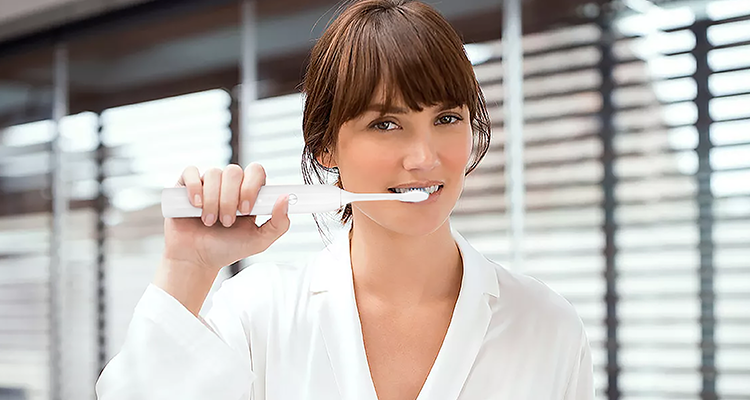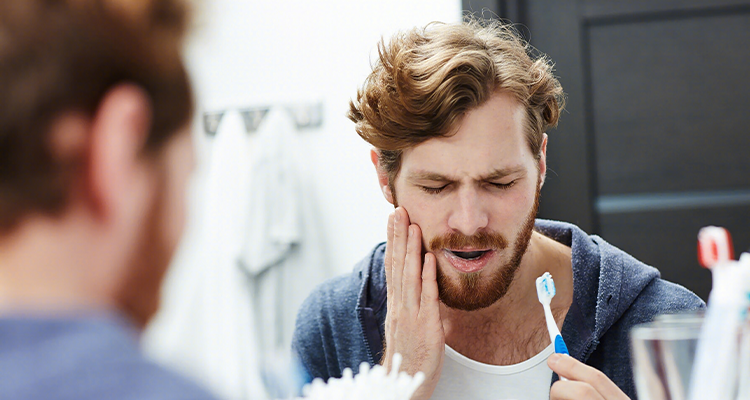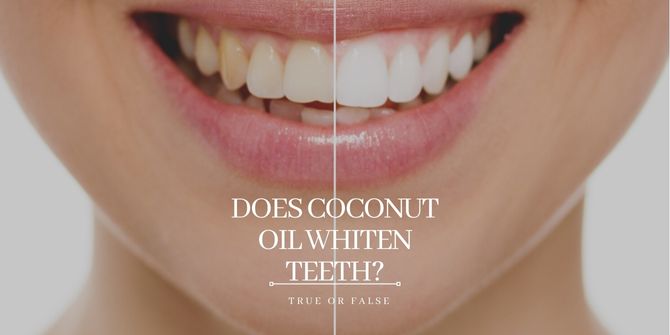In This Article
Does Toothpaste Remove Stains Teeth?
May 08, 2023

Have you ever found yourself wondering if your teeth could be whiter? A survey by the American Academy of Cosmetic Dentistry reveals an interesting statistic. Almost 90% of people believe a bright smile makes a person more attractive.
With many teeth-whitening products available, a common question arises: "Does toothpaste remove stains from teeth?" This article examines the effectiveness of toothpaste for removing stains. We will also explore alternative methods for achieving a brighter smile.
In this article, we'll explore the effectiveness of toothpaste in removing stains and other options for achieving a brighter smile.
CONTENT OF ARTICLE:
- What Are the Types of Stains on Teeth?
- What Causes stained teeth
- Does Toothpaste Remove Teeth Stains?
- Other Ways to Remove Stains
- In Conclusion
What Are the Types of Stains Teeth
First, let's find out what types of stains teeth there are.
There are several types of stains on teeth, including:
- Extrinsic Stains: These are stains that occur on the outer layer of the tooth, known as the enamel. External factors like ingesting particular foods and beverages, smoking, or poor oral hygiene are frequently to blame. Extrinsic stains can often be removed or reduced through professional teeth cleaning or teeth whitening treatments.
- Intrinsic Stains occur within the tooth, often in the dentin or pulp. Internal factors like trauma, particular medications, or excessive fluoride use frequently cause them. Intrinsic stains can be more difficult to remove and may require extensive dental treatments, such as veneers or crowns.
- Age-related stains: As we age, our teeth naturally darken and yellow. This is due to the wear and tear on the enamel over time and accumulated stains. Age-related stains can often be improved through professional teeth-whitening treatments.
- Tetracycline Stains: Tetracycline is an antibiotic that can cause gray or brown stains on the teeth if taken during childhood. These stains can be difficult to remove and require more extensive dental treatments.
- Fluorosis is caused by consuming too much fluoride during childhood. This can result in white or brown stains on the teeth. Fluorosis stains can be improved through professional teeth-whitening or more extensive dental treatments.
What are the causes of these stains of teeth? We will continue to discuss this in the next chapter.
What Causes Stains Teeth
There are two main types of stains on teeth: extrinsic and intrinsic. Extrinsic stains are those that appear on the tooth's surface as a result of outside factors like:
- Foods and drinks: coffee, tea, red wine, dark-colored sodas, berries, and tomato sauce are some of the most common culprits.
- Tobacco use: Smoking or using other tobacco products can lead to yellow or brown stains on teeth.
- Poor oral hygiene: not brushing and flossing regularly can allow plaque and tartar to build up on teeth, leading to discoloration.
- Environmental factors: exposure to certain minerals (e.g., iron, copper) in water and air pollution can cause stains on teeth.
On the other hand, intrinsic stains develop inside the tooth and may result from various causes, such as:
- Aging: As we age, the enamel on our teeth naturally wears away, making them more susceptible to stains.
- Genetics: Some people may be more prone to tooth discoloration due to their genetics.
- Medications: Certain medications, such as tetracycline and antihistamines, can cause intrinsic staining.
- Trauma: If a tooth is injured, it may become discolored due to internal bleeding.
Knowing what causes stains in teeth can help you choose the most appropriate removal method. So can toothpaste remove stains from teeth?
Does Toothpaste Remove Stains from Teeth?
Yes!
Teeth-whitening toothpaste is specifically formulated to help brighten the appearance of teeth by removing surface stains. The main active ingredients in most whitening toothpaste are abrasive particles and hydrogen peroxide.
Toothpaste contains abrasive particles. These particles act as polishing agents. They physically scrub away surface stains caused by food, drink, and other factors.
Some common abrasives used in toothpaste include baking soda, silica, and calcium carbonate. These particles are typically fine enough to clean teeth without causing damage to the enamel.
Hydrogen peroxide is another important component in many whitening toothpastes. It works by breaking down the chemical bonds which cause tooth discoloration. This process can penetrate more deeply into the tooth, resulting in the removal of stains.
It is important to note that the concentration of hydrogen peroxide in toothpaste is lower than in professional teeth whitening treatments. Therefore, the effects of toothpaste may be less dramatic.
Toothpaste usually contains key ingredients. Additionally, fluoride is often added.
This can help to strengthen tooth enamel and prevent cavities. Surfactants, such as sodium lauryl sulfate, help to create foam and distribute the toothpaste more effectively throughout the mouth. Toothpaste may contain additional ingredients, such as essential oils or enzymes. These ingredients can help freshen your breath and break down plaque.
When it comes to how toothpaste cleans teeth, it primarily works through mechanical cleaning. Brushing teeth with toothpaste helps remove plaque, bacteria, and food particles. The abrasive particles in the toothpaste physically scrub the surface of the teeth.
The surfactants in toothpaste help to create foam that can help to loosen and distribute the toothpaste more effectively. Fluoride in toothpaste assists in remineralizing and strengthening tooth enamel. This makes teeth more resistant to decay and damage. Regular brushing with toothpaste is important for maintaining good oral hygiene and can help keep teeth clean and healthy.
Other Ways to Remove Stains Teeth
Besides professional teeth cleaning and whitening treatments, several ways to remove stains from teeth at home exist. These include:
- Using an electric toothbrush: Electric toothbrushes are more effective at removing plaque and surface stains than manual toothbrushes. Some electric toothbrushes also have built-in teeth-whitening features, which can help remove stubborn stains over time.
- A water flosser is a device that uses a stream of water to clean in between teeth and along the gumline. It helps to remove plaque and debris. This can help remove surface stains and prevent future staining.
- Oil pulling is an ancient Ayurvedic practice. It involves swishing oil, such as coconut oil, around the mouth for several minutes. This can help remove surface stains and improve overall oral health.
- Using baking soda: Baking soda is a mild abrasive that can help remove surface stains from the teeth. Mix baking soda with water to create a paste. Apply this paste to the teeth. Or, you can use toothpaste that contains baking soda.
- Eating crunchy fruits and vegetables can help clean the teeth. Examples include apples and carrots, which can remove surface stains. They also promote saliva production, which can help neutralize acid and prevent future staining.
It is worth noting that these approaches may be effective in removing superficial discolorations. However, they may need to address deeper stains or underlying dental health issues more successfully.
Good oral hygiene is important. Brushing your teeth twice a day and flossing every day is essential. It's also important to visit your dentist regularly to avoid discoloration and keep your teeth healthy.
In Conclusion
Overall, toothpaste is an effective tool for maintaining good oral hygiene and removing surface stains from teeth. However, it may be worth consulting a dental professional and considering professional whitening treatments for deeper and more stubborn stains.
Maintaining a healthy diet and practicing good oral hygiene habits is important. This includes regular brushing and water flossing. Doing this can help prevent stains from forming in the future.
Toothpaste can be a useful part of your dental care routine. However, it is not the only way to address tooth staining issues.
Share this article














